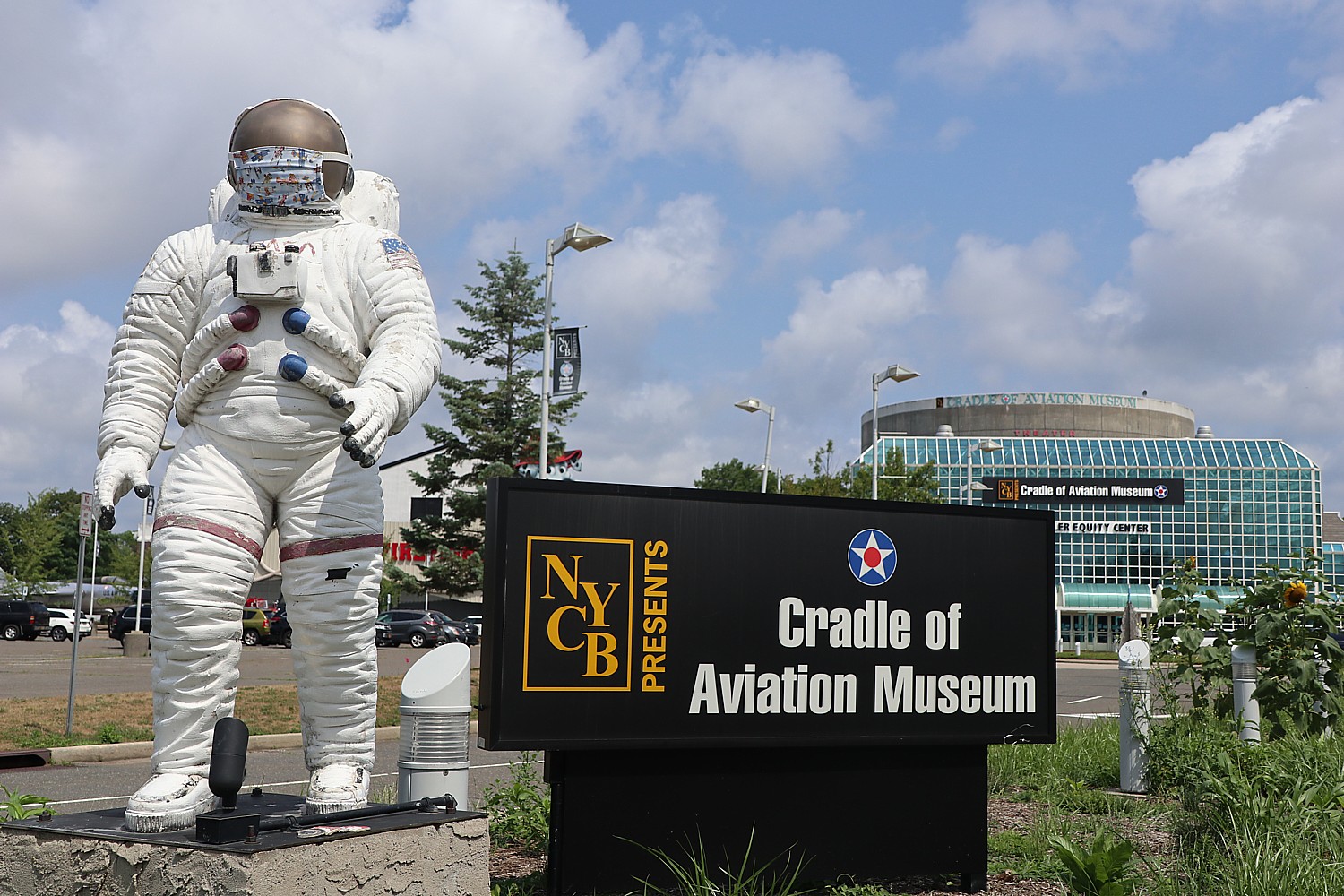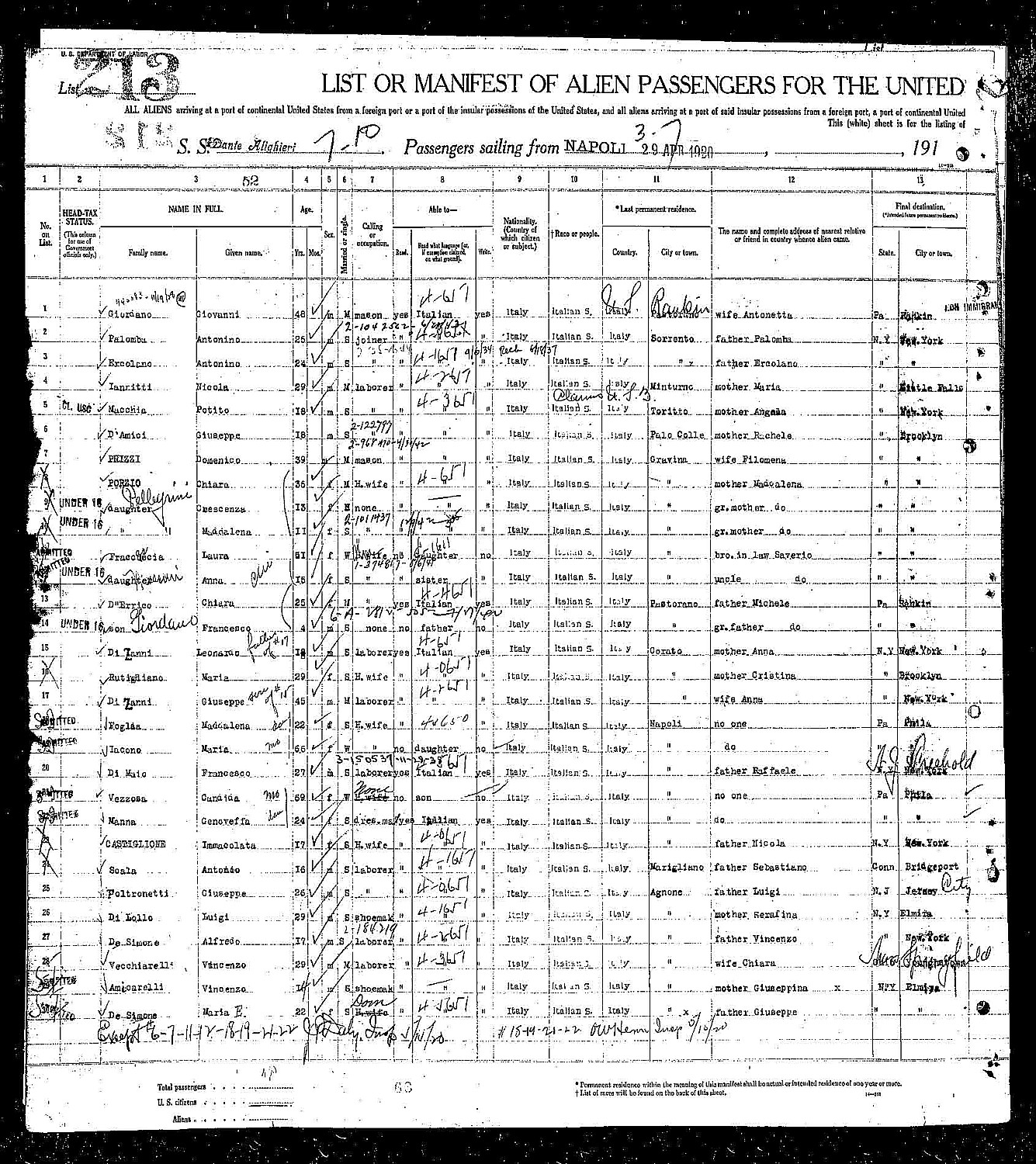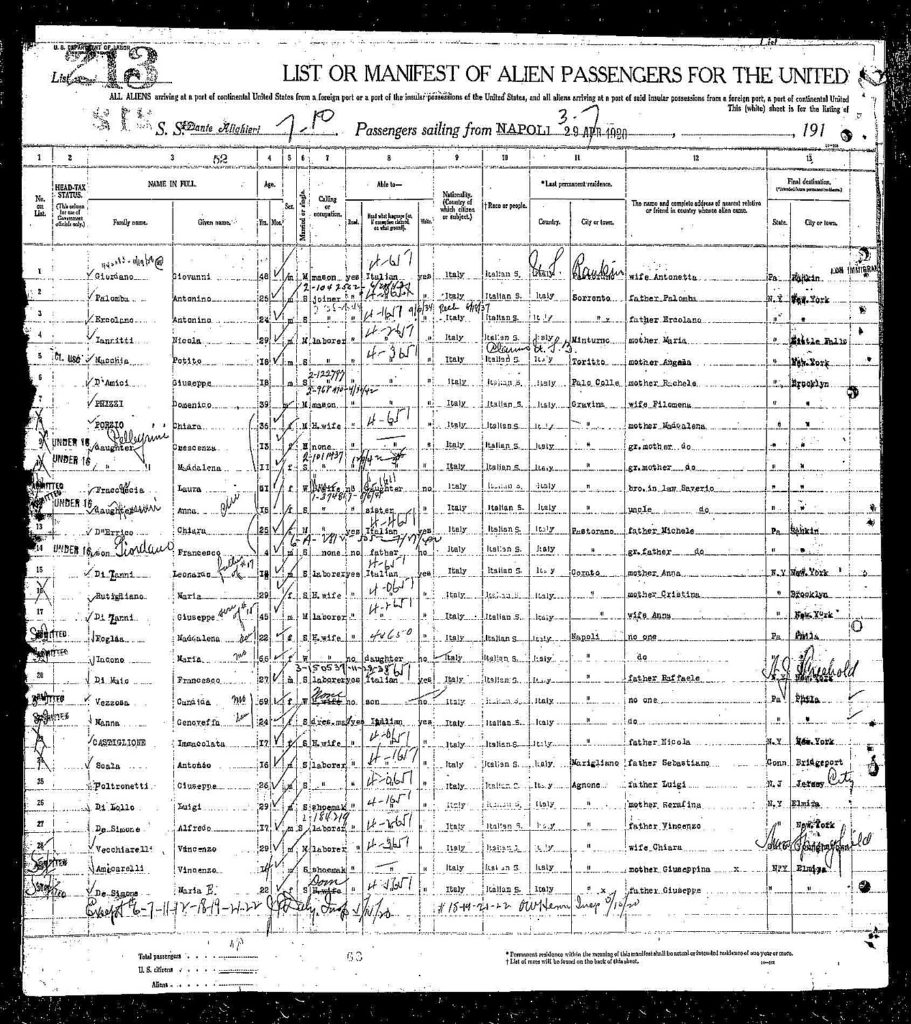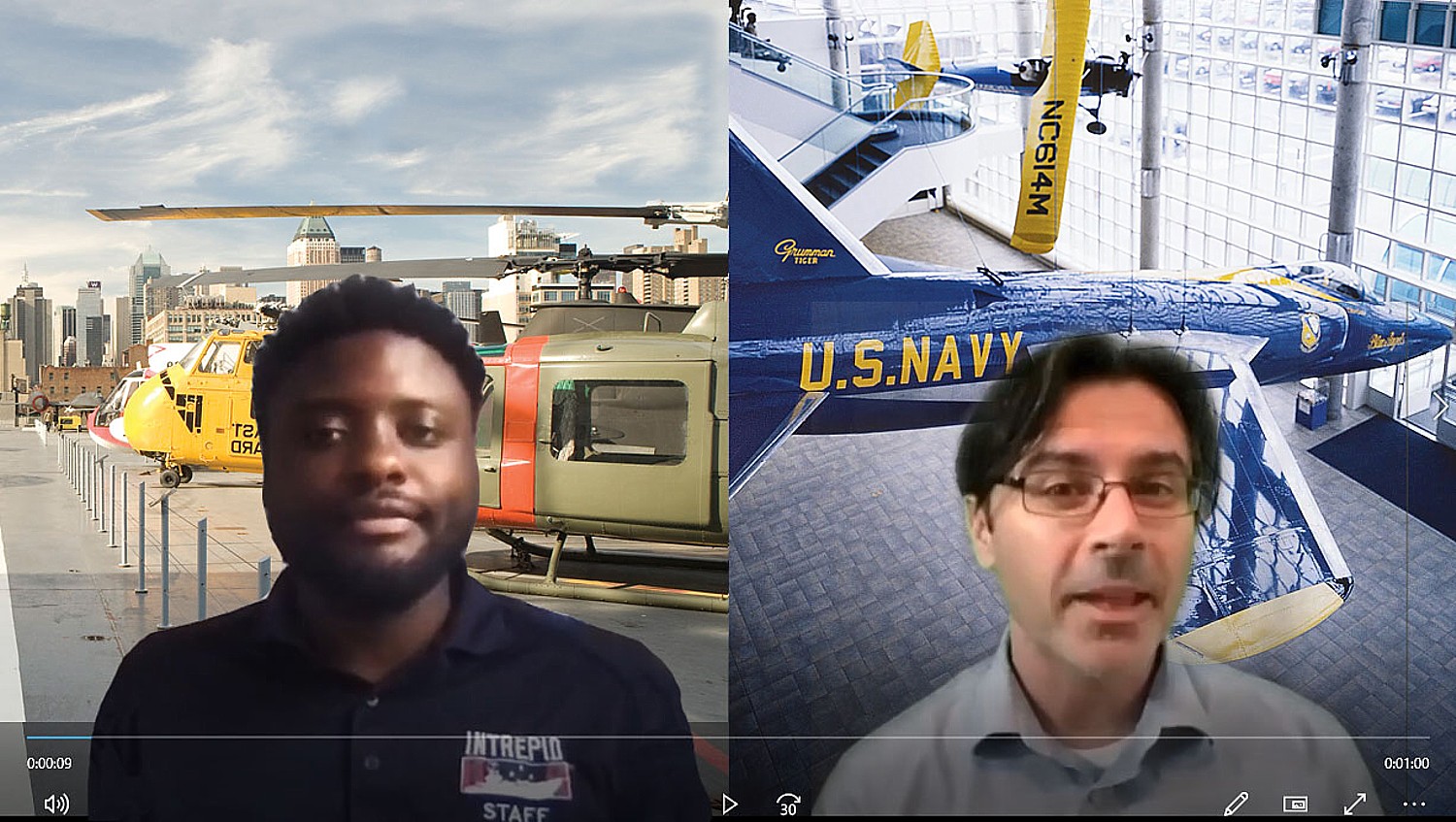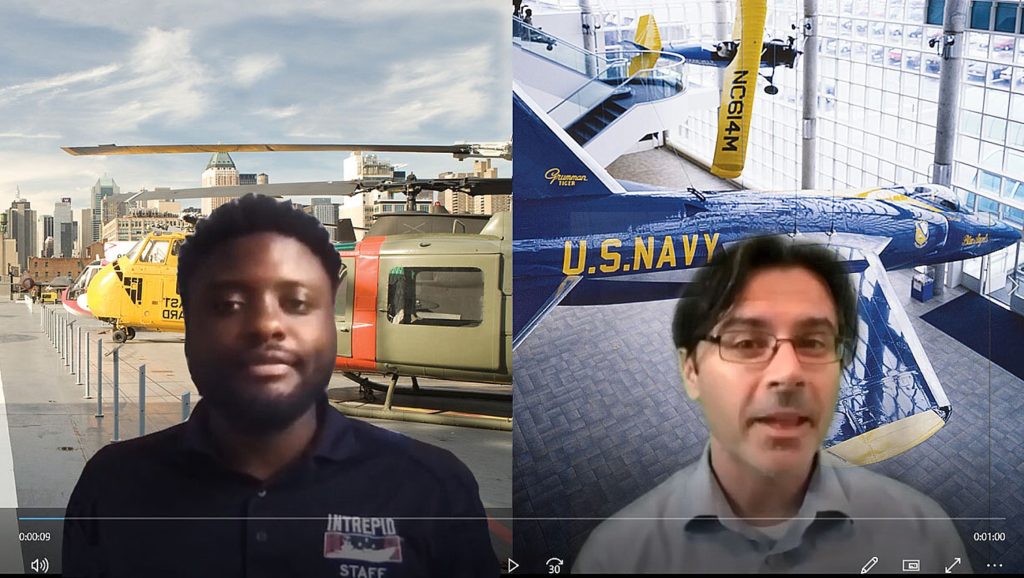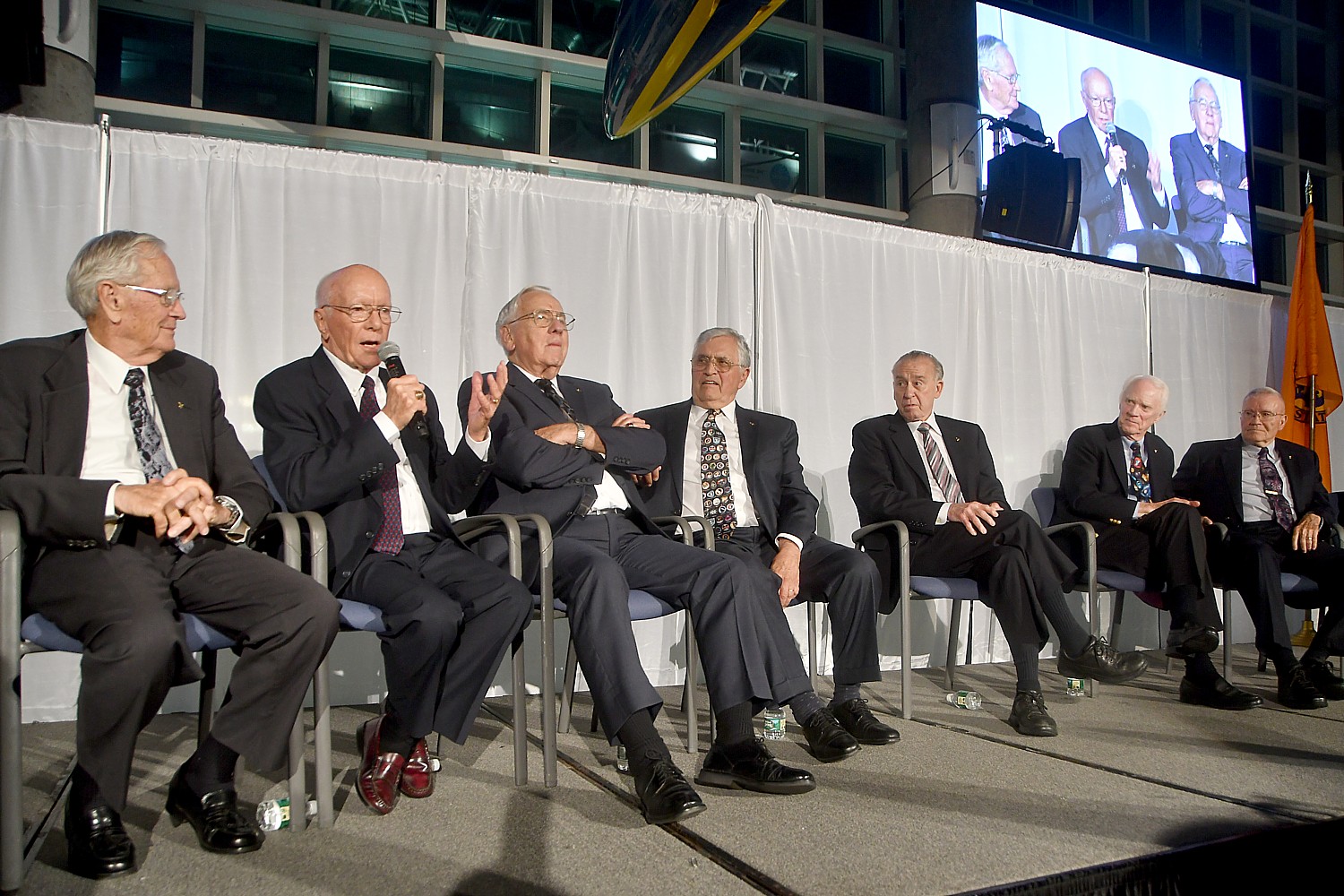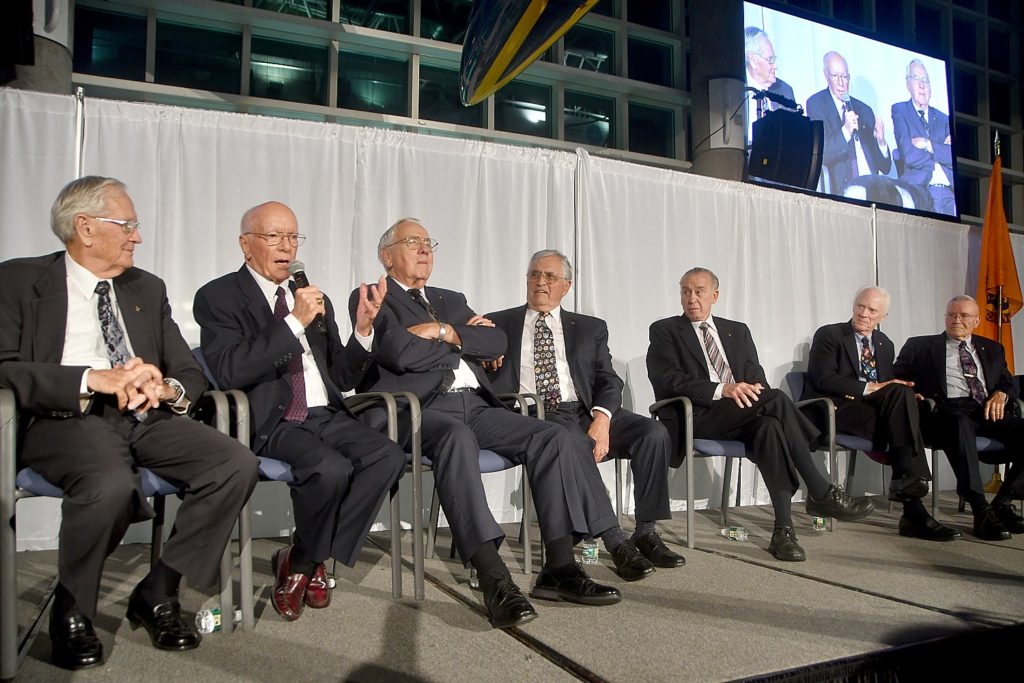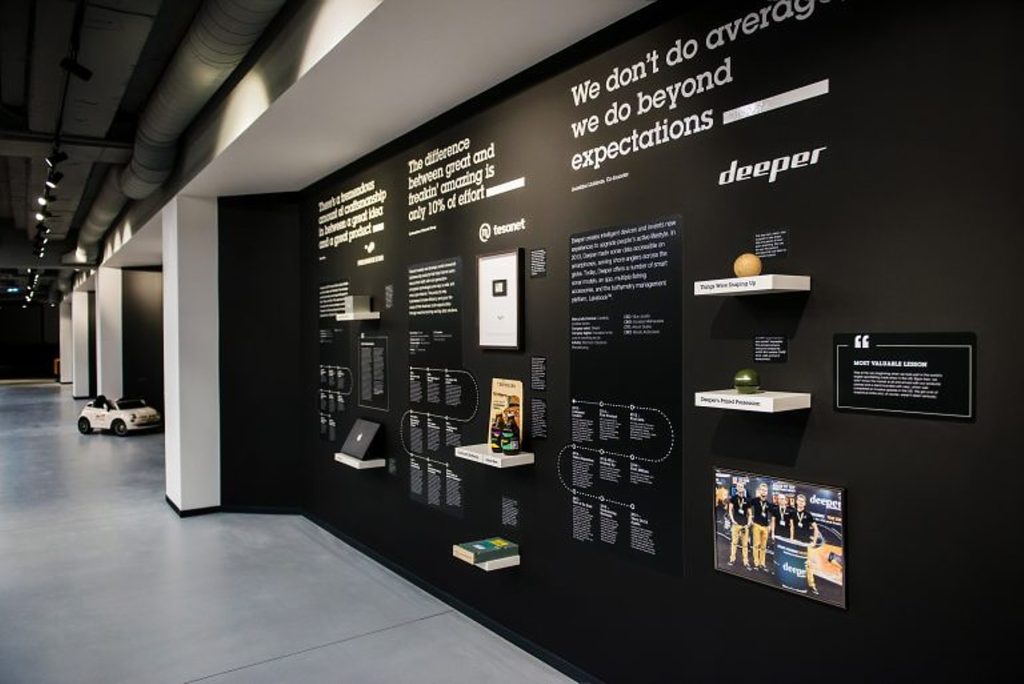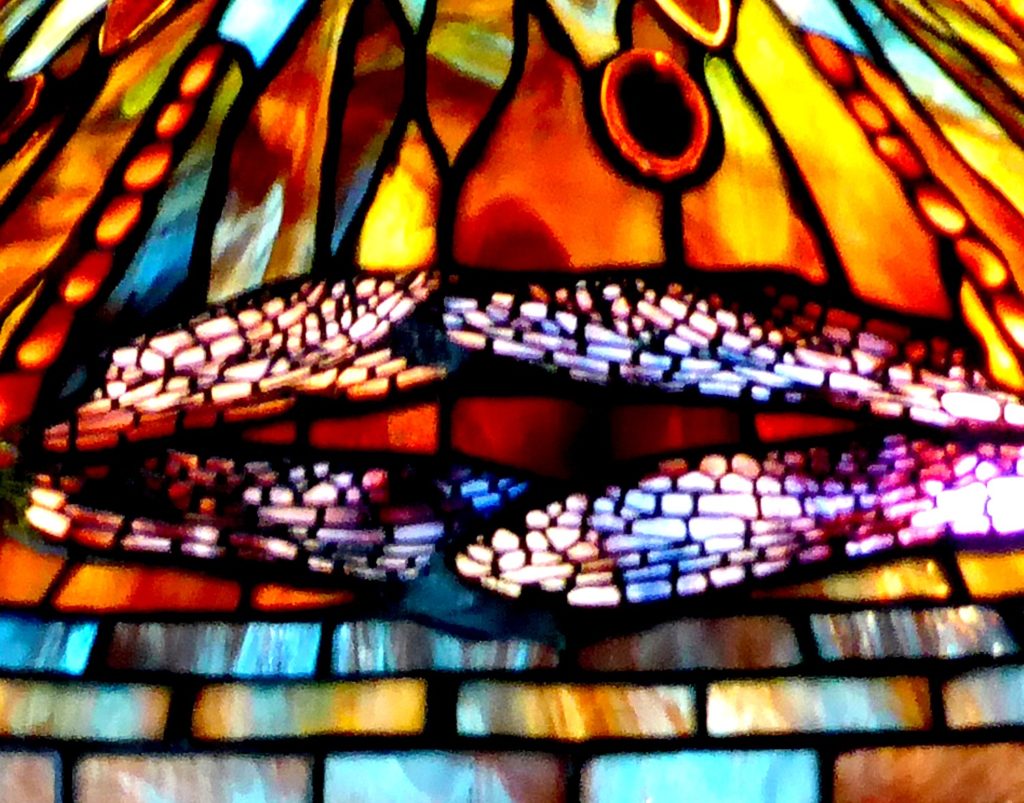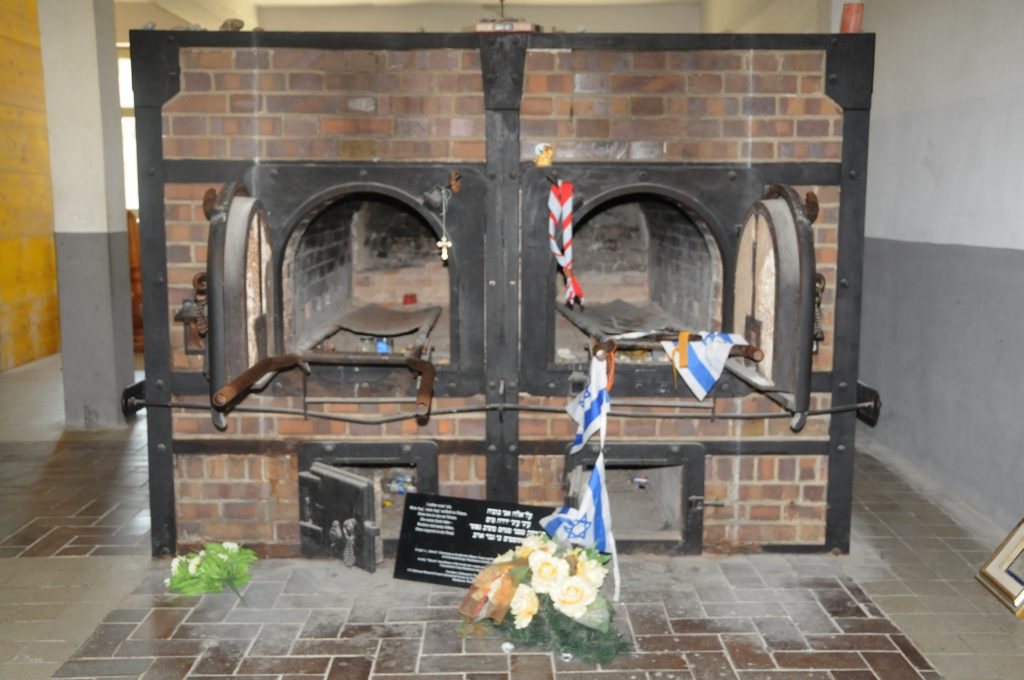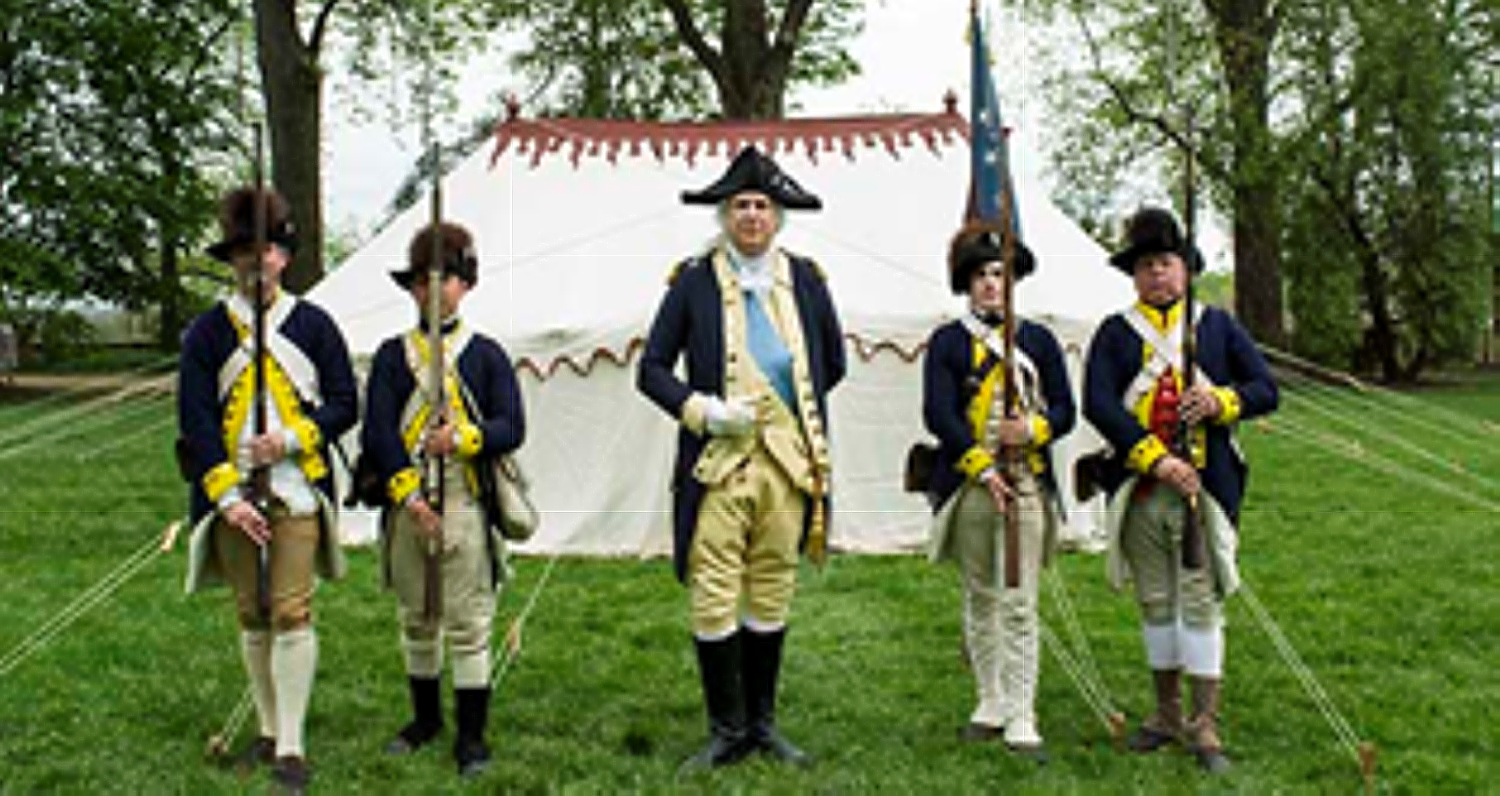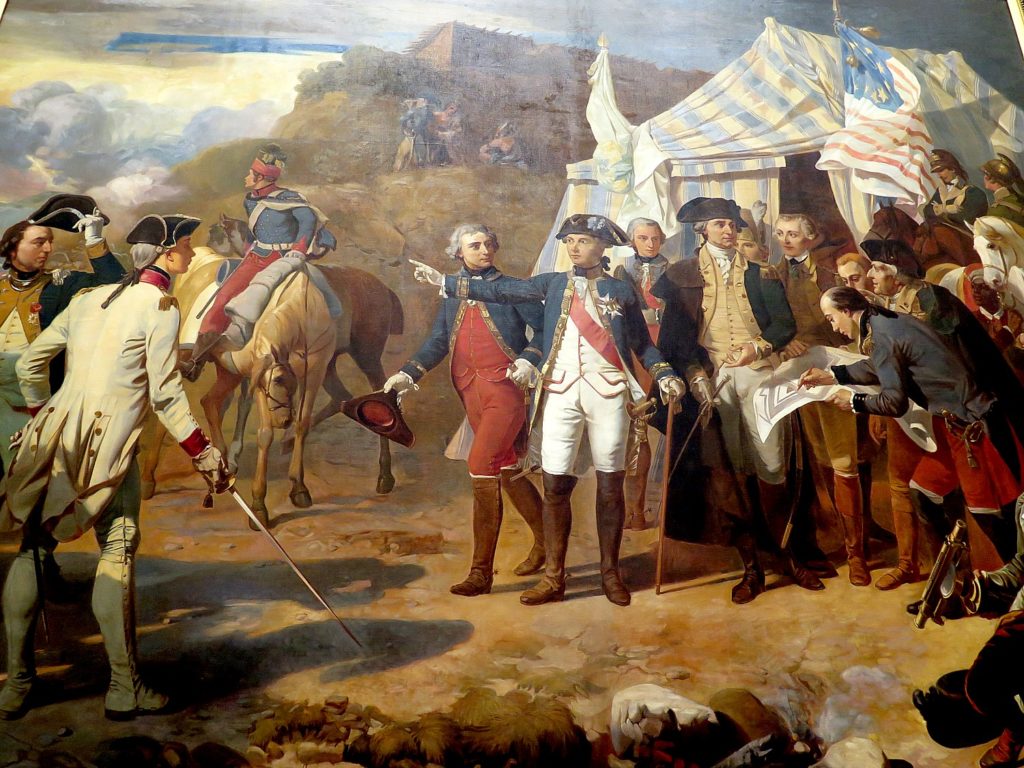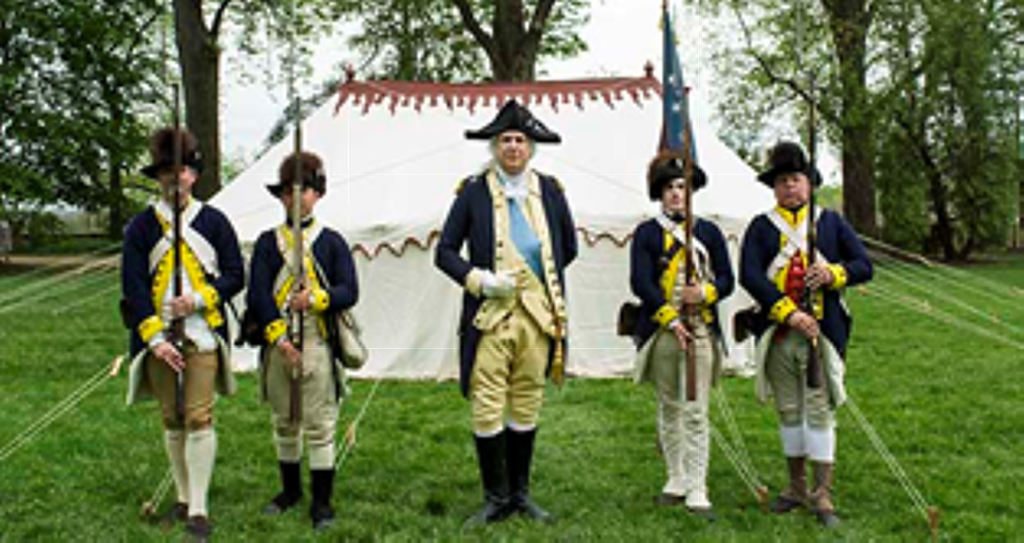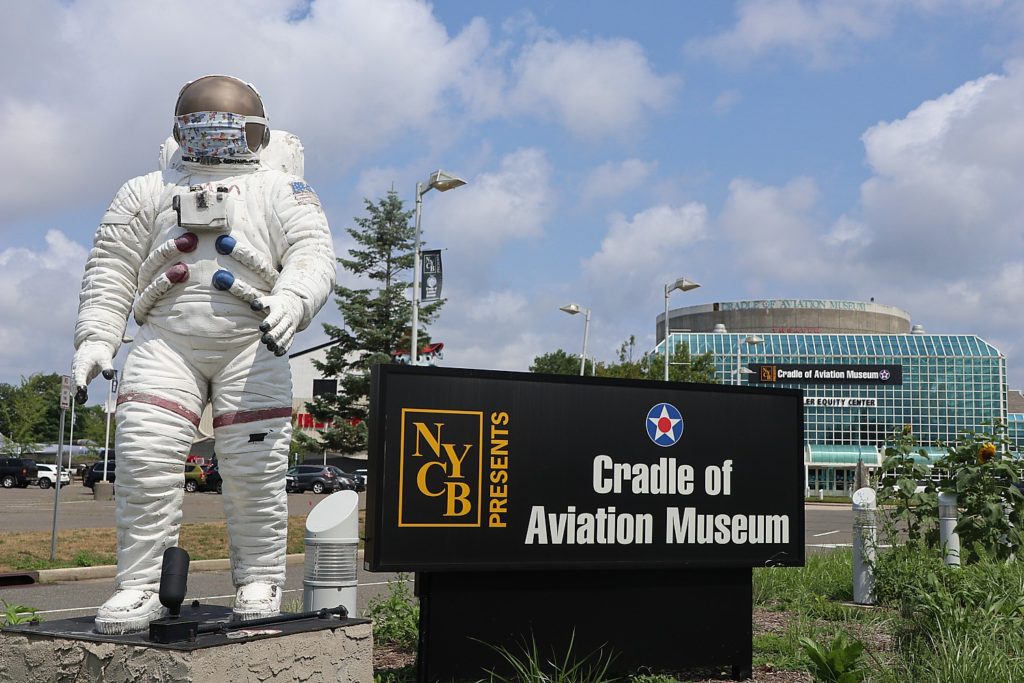
Garden City, NY July 8, 2020 – On Thursday, July 9th at 10am, the Cradle of Aviation Museum and Education Center will reopen to the public following local, state, and federal guidelines. The air and space museum has been working diligently preparing for a safe and secure experience for visitors and will begin a phased reopening approach proceeding cautiously to normal services, placing the health and safety of its visitors, employees and community first. As a thank you to frontline healthcare workers for their courageous and selfless efforts, the museum is offering free admission until August 31, 2020 with valid employee id.
Additionally, for reopening weekend only, July 9 – July 12th, the museum is rolling out from storage, four recently restored aircraft, the Republic F-105 Thunderchief, the Grumman Agcat, the Grumman X-29, and the Fokker D-VII, for visitors to view outside for the very first time.
“The Cradle staff and volunteers are excited to be able to reopen the museum to provide visitors with a safe and exciting experience. The museum staff has worked hard to create a safe and clean environment for all visitors and we look forward to welcoming everyone to celebrate the 75th Anniversary of the end of WWII as well as the 50th Anniversary of F-14 Tom Cat,” said Andrew Parton, President, Cradle of Aviation Museum and Education Center
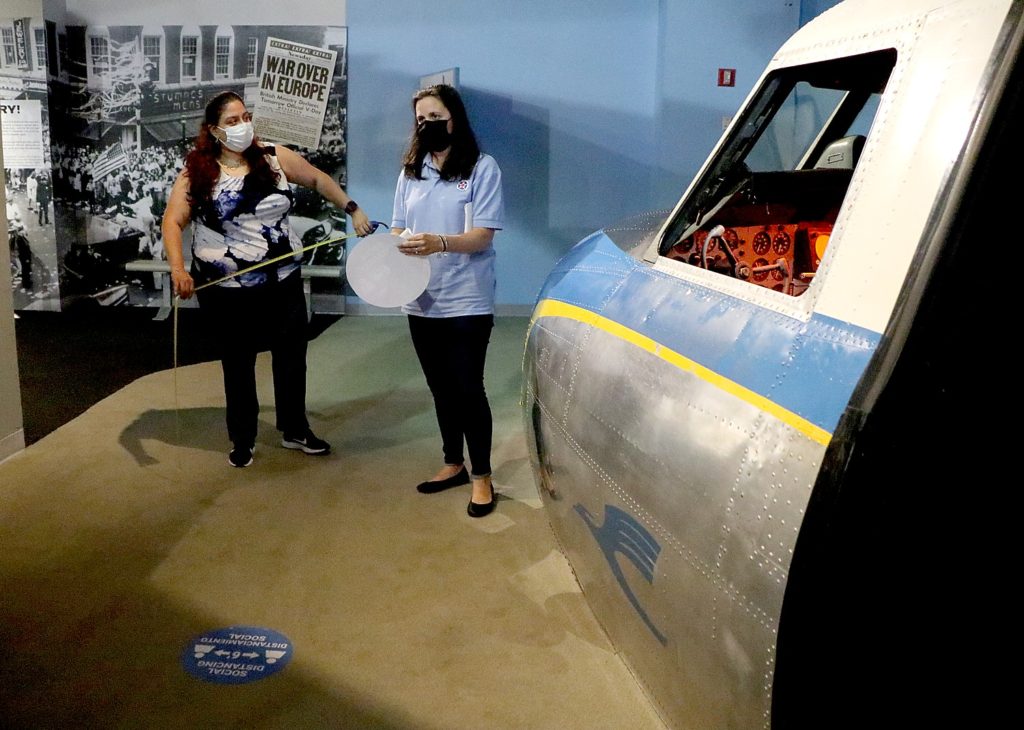
REOPENING PREPARATIONS – Reopening Plan
Reduced Services and Reduced Schedule
As of July 9th the museum’s new operating hours are Thursday – Sunday 10 am-4 pm.
Museum galleries will be open.
Theater and Planetarium, Nunley’s Carousel, and Junior Jet Club are temporarily closed as per NYS direction.
Cafe – Open with limited light snacks and pre-packaged items.
Admission tickets may be purchased online or at the box office.
Safety Requirements
All Employees are required to wear face masks.
All visitors over the age of 2 are required to wear face masks while at the museum. Disposable face masks will be made available for anyone who does not have them. This is an NYS mandate; this simple action keeps our employees and fellow visitors safe, helping to stop the spread.
Certain jobs will require employees to use gloves, but gloves are available to all staff who choose to use them.
The museum has added signage about appropriate distancing, wearing masks, our cleaning procedures and best practices in sanitation behavior.
Implementing Social Distancing Standards
The museum is limiting the number of people allowed in the museum by 25% maximum capacity for the foreseeable future.
The museum is introducing socially distanced queuing at our box office, entrances, café and store registers.
Six feet is the standard, and staff are empowered to close exhibits if maintaining 6 feet of distance between people appears to not be possible.
The museum has installed plexiglass shields at all registers.
Directional floor markers and one-way flow through the museum and within galleries,
The museum is restricting group visits, guided tours, public programs, and special or private events limiting the number of participants until further notice as directed by NYS Government.
Enhancing Cleaning Procedures
The museum maintains its enhanced COVID-19 cleaning procedures (including thorough, frequent cleanings of high-touch surface areas), in addition to its daily standard cleaning services.
Bathrooms are cleaned every hour on the hour during work hours and are deep-cleaned in the evenings after the building is closed to the public.
The museum has installed hand sanitizer stations at frequent intervals throughout the museum, galleries and offices.
The museum is using the EPA recommended cleaner that is effective in killing SARS and COVID 19 for all of its sanitizing efforts along with 80% isopropyl alcohol spray for surfaces.
Health Screening and Policies
The museum is requiring employees to do a health screening before each shift; checking for COVID symptoms; taking temperatures. Anyone with a fever of 100.4 or higher will be required to go home and we are encouraging staff to stay home if they feel unwell.
REOPENING – Top Reasons to Return to the Cradle
Free Admission for Healthcare Workers
Free Admission for Healhcare Workers until August 30, 2020 with valid employee ID.
Tickets can be ordered online or at box office.
A thank you to our courageous heroes.
Four Recently Restored Planes on Display Outdoors for First Time One Weekend Only
In recognition of the re-opening of the Cradle of Aviation Museum, the museum will allow visitors to see four aircraft recently restored and in storage for ONE weekend only July 9-12.
This is the FIRST time these aircraft will have been shown to the public & will be placed back in storage after this weekend.
Visitors may inspect the aircraft up close, barrier free, and museum staff will be on hand to answer any questions. The aircraft will be shown outdoors which should allow for excellent photographic opportunities. This viewing is free with admission.
Republic F-105 Thunderchief. Mach 2 fighter/bomber built in Farmingdale in the late 1950’s, and workhorse of the Vietnam War. Still the largest single-engine single-seat military aircraft ever built!
Grumman Agcat. 1960’s crop duster designed and first built in Bethpage. This is the only agricultural aircraft ever designed and built on Long Island. Aircraft was in a crash in the 1980’s and was recently extensively restored by the museum.
Grumman X-29. This full-scale mockup was built by Grumman prior to the construction of the two experimental jets in the 1980’s. Pioneered many advanced concepts including forward-swept wings, composite construction and fly-by-wire control.
Fokker D-VII. This vintage flyable replica is still under active restoration. German Fokker D-VII’s were the first fighters stationed on Mitchel Field in the years immediately after World War One. As the war’s best fighter, many were seized in Germany at the war’s conclusion and shipped to America. This exact replica includes many original parts. Upon conclusion of the restoration this will be the only Fokker D-VII in the world in U.S. Air Service markings.
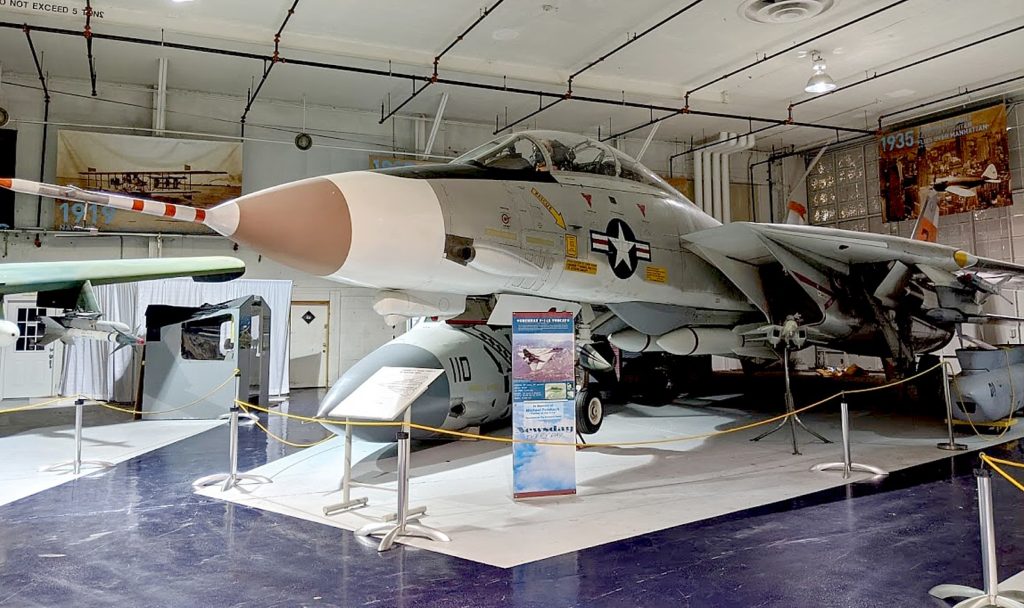
2020 is the 75th Anniversary of the End of WWII
Visitors can commemorate the 75th Anniversary of the end of WWII visitors with a look back at the aircraft and the people that made a difference in ending the war including such fighter planes as the P-47 and Grumman’s Avenger, Hellcat, and Wildcat.
2020 is the 50th Anniversary of the First Flight of the F-14
Visitors can experience the F-14 Tomcat, one of the most iconic Navy fighters, ever built on Long Island featured prominently in Top Gun. See a full size aircraft, the third f-14 ever built and oldest flying F-14 from 1971-1990, two -F14 cockpits, nose and flying suits. Learn about the plane, the pilots, and why the F-14 is such a beloved fighter and just in time before the release of Top Gun: Maverick this December.
The Cradle of Aviation Museum is an Escape and a Place to Feel Inspired for the Future
Who couldn’t use a little of that these days?
Spacious, clean, safe, air-conditioned, and inspiring.
The Cradle of Aviation Museum & Education Center is home to over 75 planes and spacecraft representing over 100 years of aviation history and Long Island’s only Giant Screen Dome Theater. The museum is located on Museum Row, Charles Lindbergh Blvd., in Garden City. Call (516) 572-4111 or visit www.cradleofaviation.org
For more travel features, visit:
goingplacesnearandfar.wordpress.com
www.huffingtonpost.com/author/karen-rubin
travelwritersmagazine.com/TravelFeaturesSyndicate/
goingplacesfarandnear.tumblr.com/
instagram.com/going_places_far_and_near/
‘Like’ us on facebook.com/NewsPhotoFeatures
Twitter: @TravelFeatures
